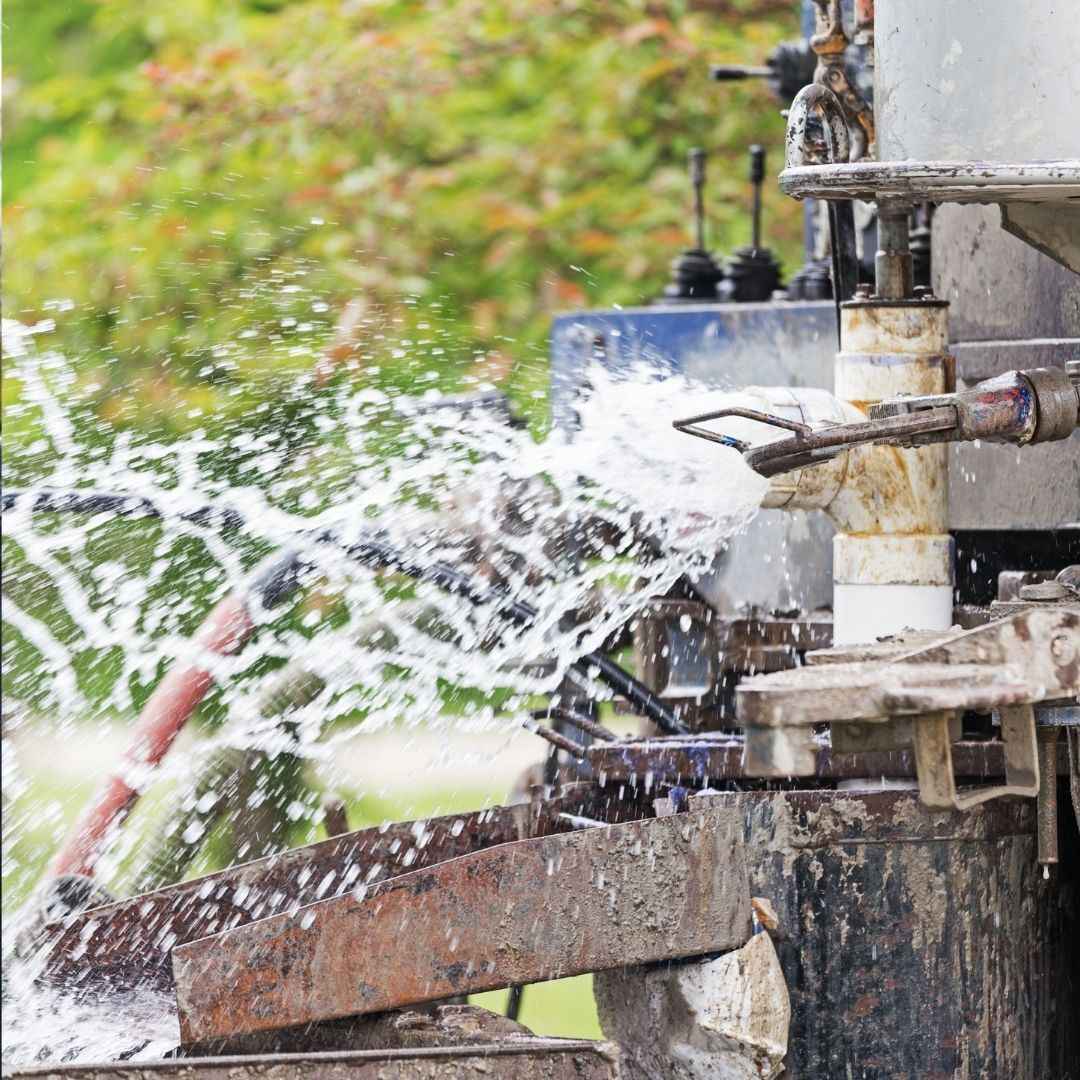
How Deep Should You Drill Your Water Well? Key Factors to Consider
How deep is deep enough? This is the first and most important question that arises when we consider drilling a water well. Whether you’re managing farmland or planning for off-grid living, the depth of the well matters, as it directly influences how dependable, clean, and abundant your water supply will be.
Water well taps into underground aquifers, and understanding the right depth is what ensures a lasting performance. Too shallow – and you risk running dry during droughts or pulling in contaminated surface water. Too deep – and you could face steep drilling costs with minimal added benefits.
The depth you choose will affect how much water your well can produce, how clean that water is, and how well it holds up. In this blog, we’ll explore some important factors to consider for water well pump drilling.
How Deep Should A Water Well Be?
Determining how deep to drill your water well isn’t a one-size-fits-all answer – but some general estimates can help guide your expectations. The depth of the water well largely depends on the local geology, water table levels, and how much water you need.
That said, here are some common ranges to consider –
- Shallow Wells – These are usually 25 – 100 feet deep and may be sufficient in areas with higher water tables. However, they’re more vulnerable to seasonal drying and contamination.
- Moderate-Depth Wells – Often ranges from 100 to 300 feet. This depth is common for residential wells in regions with moderate groundwater levels and provides a safer buffer against surface pollutants.
- Deep Wells – They can go as deep as 400 to 1,000 feet – or even more in arid or rocky regions. These are usually drilled to reach confined aquifers and ensure water stability for a longer period.
On average, most residential water wells in the US are between 150 and 300 feet deep. However, it is important to note that the deeper the well – the higher the cost – but it gives an assurance against drought and contamination.
It is advisable to consult a professional water well-drilling company to make an informed decision. They’ll evaluate your region, needs, etc., to understand which depth is suitable for you.
| Need help determining the right depth for your water well? Contact our experts today! |
5 Factors To Consider When Drilling A Water Well
Here are 5 major factors that you must consider when drilling a water well –
-
Local Geology And Subsurface Composition
Before you drill the well, it is advisable to take a look at what lies beneath your land. The geology under your property, such as – loose sand, gravel, clay, or solid rock – can either help or hinder your drilling process.
Some soil types are naturally water-bearing and allow for easier drilling, which potentially reduces the costs. Others, such as – granite or thick clay layers, might force you to drill much deeper to find dependable aquifers.
The geology of the place where the well will be drilled matters because it determines how deep you’ll need to go and how much water your well can realistically. A high-yield aquifer trapped between dense layers of rock might be 200 feet deeper than one in a sandy area. However, it could deliver a better water supply for decades.
-
Water Table Depth And Seasonal Fluctuation
You might think – once you reach the water level, the job is done – but that’s not it. The water table, which is the upper surface of groundwater, doesn’t stay in one place. It rises and falls with the seasons, local rainfall, and even usage from nearby wells.
If you drill just far enough to meet the current water level – there might be a problem later. You might face water scarcity during dry weather. Hence, it is advisable to drill below that point. This provides a buffer against seasonal changes and ensures that your pump always has a consistent supply of water from which to draw.
Though it might seem costly at first, it’s a smart investment for long-term use, ensuring water reliability.
-
Aquifer Type And Yield
If you’re wondering why all aquifers are the same – well, it’s time to think again. Some aquifers are shallow and unconfined, which means – they’re closer to the surface. They can be more easily affected by rainfall and drought.
Deeper, confined aquifers, on the other hand, are usually protected by impermeable layers of rock or clay. This natural barrier or filtration helps keep contaminants out and creates a more stable source of water. They offer better and higher-quality water.
So, while it might cost you a little bit more to drill deeper into a confined aquifer, it often pays off in terms of cleaner, safer water and little to no stress.
-
Water Quality And Contamination Risks
Water quality is not only about clarity or taste – you should also consider your health, safety, and regulatory compliance.
Shallow wells are more exposed to surface-level pollutants, such as – fertilizers, septic runoffs, pesticides, and even livestock waste. These contaminants can seep through permeable soils and enter the water table. Thus making the water unsafe to use.
On the other hand, deeper wells drilled into confined aquifers are less likely to be affected by surface contamination. Drilling deeper wells means you pass through several layers of soil and rocks that act as filters, reducing the chance of harmful substances entering your well.
-
Intended Water Use
Before drilling, it is important to understand how much water you’ll need daily – not just now, but in the future. A well meant for occasional use, such as – watering a garden, doesn’t require being as deep as one supplying an entire household, livestock, or irrigation system.
Deeper wells often have access to aquifers with greater recharge rates – which makes them better suited for high-volume demands. Considering your needs ensures you are not spending unnecessarily, and there are no shortages, pump burnout, or the need to redrill.
Your usage pattern determines the depth of the well by assessing how much the well must tolerate without going dry.
|
Get a free estimate for your water well drilling project now. |
Takeaway
Drilling a water well is considered a long-term investment – it’s not something you’d do every year or season. While it’s tempting to aim for the nearest water source, the goal should be a clean and reliable water supply.
A well that is too shallow might give you water for a season, but a well drilled to the right depth can serve generations.
So, be mindful and take time to get your land assessed before beginning the drilling process. When we talk about the water, it’s just not about finding it – it’s about finding the right depth.
Trust Bruce Mackay Pump & Well Service For Reliable, Expert Water Well Drilling Services In Winnemucca!
If you’re worried about the depths of the water well, get in touch with Bruce Mackay Pump & Well Service, as we educate you on factors that determine the depth. We are a family-owned business serving Winnemucca with 100+ years of experience. We offer 24/7 emergency services and help you with water well repair in Winnemucca. Contact us today to book a consultation.
